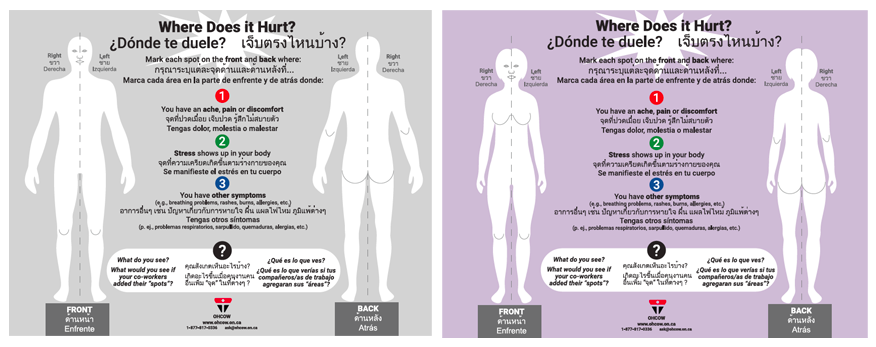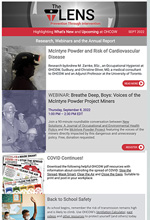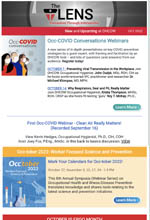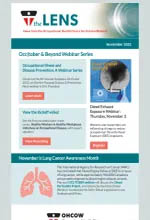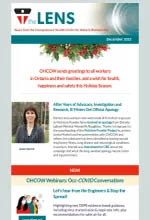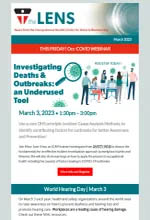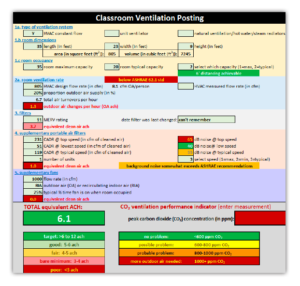KEY PRIORITIES
Tools and Resources
OHCOW continues to develop helpful and informative tools and resources for use by our clients in improving their workplace situation.
Apps, Tools and Calculators
The Danger of Exhaust Fumes
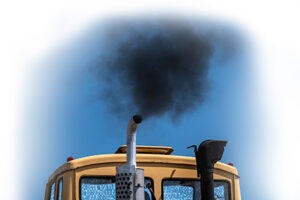 This calculator was created by OHCOW in response to the accumulating scientific evidence pointing to the risk to human health from Diesel Engine Exhaust (DEE) exposure. Using the calculator, people are able to determine their risk of developing lung cancer from inhaling DEE. Such knowledge can lead to prevention measures, such as choosing cleaner methods, diverting or reducing the substance at the source or the use of Personal Protective Equipment.
This calculator was created by OHCOW in response to the accumulating scientific evidence pointing to the risk to human health from Diesel Engine Exhaust (DEE) exposure. Using the calculator, people are able to determine their risk of developing lung cancer from inhaling DEE. Such knowledge can lead to prevention measures, such as choosing cleaner methods, diverting or reducing the substance at the source or the use of Personal Protective Equipment.
The evidence cannot be ignored. The International Agency for Research on Cancer (IARC) has concluded that DEE is a cause of lung cancer (Group 1: carcinogenic to humans). CAREX Canada estimates that approximately 897,000 Canadians are currently exposed to diesel engine exhaust at work. Approximately 2.4% (OCRC) to 6% (Vermeulen et al 2014) of annual lung cancer deaths may be due to DEE exposure.
Combined data from three U.S. occupational cohort studies including more than 40,000 workers in the trucking and mining industries (Vermeulen et al 2014) have provided a powerful estimate of the risk of lung cancer based on the level and duration of exposure to DEE. The truckers’ study Garshick et al. (2012) and miners’ studies Silverman et al. (2012), (Attfield et al. 2012), (Stewart et al. 2010) combined, allows for a determination of the risk of lung cancer based on the level of exposure to diesel particulate matter (DPM). DPM measured as elemental carbon (EC) is the best surrogate of exposure.
The tool requires either an estimate of exposure, as EC (NIOSH 5040) and duration of exposure. Where the only measures available are total carbon (NIOSH 5040) or Respirable Combustible Dust (RCD) conversion factors have been provided.
OHCOW recommends the use of a calculator tool to determine risk levels for inhaling toxic substances such as DDE.
 Calculating Work Exposures
Calculating Work Exposures
Created in partnership with the Occupational Disease Action Plan Contributors, the Occupational Exposure Limits (OEL) Adjustment Tool allows the calculation of the adjusted workplace exposure limit for an unusual or extended work shift which has been adapted using the methodology set out in the Guide for the Adjustment of Permissible Exposure Values for Unusual Work Schedules (March 2015), published by Quebec’s Institut de recherche Robert-Sauvé en santé et en sécurité du travail (IRSST).
This method, used in the Province of Quebec and referenced by the ACGIH and other health and safety organizations, considers toxicological information such as sensitization, irritation, organ toxicity, reproductive system toxicity and teratogenicity, in addition to exposure and recovery times.
Irregular work shifts are now commonplace in many industries, and the standard eight-hour work day/40 hour work week (which has been the basis for time-weighted average [TWA] occupational exposure limits) is often not the reality. To address this change, exposure limit adjustments have increasingly become an essential component in workplace exposure assessment.
In addition to providing adjustment for Ontario compliance limits, OHCOW used its own research, data published by GESTIS and the ACGIH to assist in determining the lowest exposure limit easily accessible for occupational hygienists, advanced JHSC members or workers with additional training. These limits vary by jurisdiction, and are published by a number of different governments or private organizations. The limits reflect the understanding and interpretation by those jurisdictions of the science used in determining a limit for workers.
This tool is intended to provide knowledge translation in a user-friendly manner. It is the user’s responsibility to fully understand the limitations and application of the adjusted OEL to their workplace scenario and exposure/risk assessment. Results must be used with caution, as they are simply a guide and any misuse may affect the health and safety of workers in their respective workplaces.
A guidance summary has been prepared to allow the user to review the health-based limit proposed and in the case of limits proposed by OHCOW reference to research used in determining the limit.
Research Papers
Perceived Adequacy of Infection Control Practices and Symptoms of Anxiety Among In-Person Elementary School Educators in Ontario
Smith, Peter M. PhD; Oudyk, John MSc; Cedillo, Leonor ScD; Inouye, Kimiko MA; Potter, Guy PhD; Mustard, Cameron ScD
Abstract
Objective
The aim of this study was to examine the association between the perceived adequacy of infection control practices (ICPs) and symptoms of anxiety among educators in Ontario, Canada.
Methods
Data from 4947 educators were collected in December 2020. Modified Poisson models assessed the association between adequacy of ICPs and moderate or severe anxiety symptoms, adjusting for a range of covariates.
Results
Approximately 60% of respondents reported moderate or severe anxiety symptoms. Two-thirds (66.5%) of the sample had less than half of their ICP needs met. Respondents with less than half their ICP needs met were more than three times more likely to have moderate or severe anxiety, compared with respondents with their ICP needs met.
Conclusion
Findings highlight the importance of adequate administrative and engineering controls in schools, not only to minimize risk of infection, but also for educator's mental health.
Read the paper here.
Longitudinal Reciprocal Relationships Between the Psychosocial Work Environment and Burnout
Shahidi, Faraz Vahid PhD; Smith, Peter M. PhD; Oudyk, John MSc; Gignac, Monique A.M. PhD
Abstract
Objective:
To examine longitudinal reciprocal relationships between the psychosocial work environment and burnout.
Methods:
We used two-wave cross-lagged panel models to estimate associations between a wide range of psychosocial work factors (ie, job demands, job control, job insecurity, coworker support, supervisor support, and organizational justice) and burnout in a broadly representative sample of the general working population in Canada (n = 453).
Results:
Bidirectional associations between the psychosocial work environment and burnout were observed. Results supported the causal predominance of psychosocial work factors over burnout. Higher job demands, lower job control, higher job insecurity, and lower organizational justice predicted burnout over time. Burnout only predicted lower supervisor support over time.
Conclusions:
Our findings suggest that stress at work is better understood as a cause rather than a consequence of burnout in the general working population.
The psychosocial work environment among educators during the COVID-19 pandemic
P. Smith, J Oudyk, L Cedillo, K Inouye, G Potter, C Mustard
Abstract
Background
The education sector has been heavily impacted by COVID-19. While the impact on school-aged children has received much attention, less attention has focused on the experiences of educators.
Aims
To compare various dimensions of the psychosocial work environment and health outcomes between educators engaged in online learning to those engaged in in-person learning in the Canadian province of Ontario.
Methods
Responses from 5438 educators engaged in either online or in-person learning were collected between 23 November and 21 December 2020; three months after the start of the 2020/21 academic year in September 2020. Psychosocial outcomes included quantitative demands, work pace, predictability, role conflicts, and social support from supervisors and co-workers; assessed using an abbreviated version of the Copenhagen Psychosocial Questionnaire. Secondary outcomes included burnout and sleep troubles. Ordinary Least-Squares regression models examined adjusted mean differences in the levels of outcomes for respondents in in-person versus online learning, after adjustment for a variety of covariates.
Results
Compared to respondents engaged in in-person learning, respondents engaged in online learning reported less predictability, higher role conflicts and less support from supervisors and co-workers. Statistically significant differences in work pace, burnout and sleep troubles were also observed across learning modes, although these differences did not exceed previously suggested thresholds for minimum important differences.
Conclusions
Important differences in the psychosocial work environment were observed between respondents engaged in in-person learning versus online learning. Addressing these differences is required, given the potential continued importance of online learning within the context of the COVID-19 pandemic and beyond.
McIntyre Powder and its potential contributions to cardiovascular disease risk: A literature review through the McIntyre Powder historical lens
Andrew Zarnke, Christine Oliver, Sandra Dorman
Abstract
McIntyre Powder (MP) is a fine aluminum powder that was developed to prevent silicosis in gold and uranium mine workers in Ontario, Canada, and was administered to miners there from 1943 to 1979. Mine workers were exposed to high concentrations (35.6 mg/m3 ) of MP for approximately 10 min before every work shift. Contemporary physical and chemical characterizations of this powder have revealed that 12% of the powder is in the ultrafine particle size-range (nanoparticles); and the remaining 88%, in the fine particulate size range (below 2.5 µm in diameter). The confluence of ultrafine particulate (UFP) composition and high airborne concentration of MP would be expected to overwhelm the defense mechanisms of the lung and increase the lung dust burden of the mine worker exposed to respirable dust in the mine. Published studies revealing associations between air pollution particulates and increased risk for cardiovascular disease (CVD) shown a dose-response relationship with ambient PM2.5 and UFP and suggest that miners exposed to MP may also be at increased risk of CVD. The historical perspective of the use of MP in northern Ontario hard-rock mines and its potential implications for CVD in exposed mine workers are discussed.
Knowledge Translation
MAYDAY, MAYDAY 2022
Opioid treatment, harm reduction, addiction in the workplace
OCC-COVID
CONVERSATIONS
SPRING 2022
Preventing Viral transmission, Clean Air and Ventilation
OCC-COVID
CONVERSATIONS
WINTER 2022
Preventing Viral transmission, Clean Air and Ventilation
OCC-TOBER 2022
Worker-Focused Science & Prevention. Informative webinars presented by experts on the topic of the science behind Occupational Health, with Q&A by live audience.
RSI DAY
WEBINAR SERIES 2023
Repetitive Strain Injury Day increases awareness of the debilitating issues and serves to educate workers about the hazards and prevention methods.
OCC-DISEASE 2022
Managing Heat Stress, New research, OHCOW's Humidex-based Heat Stress Plan
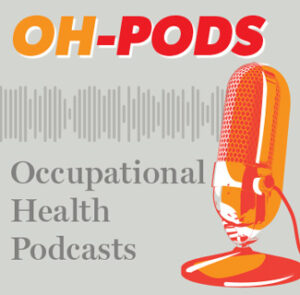 The popular OHCOW podcast series discusses a wide array of topics and the challenges of current and emerging trends in occupational health. Effective prevention strategies to empower workers are examined. Both Ergonomics and Occupational Hygiene topics are discussed.
The popular OHCOW podcast series discusses a wide array of topics and the challenges of current and emerging trends in occupational health. Effective prevention strategies to empower workers are examined. Both Ergonomics and Occupational Hygiene topics are discussed.
Our Nurses. Our Future. The Role of the Occupational Health Nurse at OHCOW
In celebration of the 2023 National Nurses Week, a discussion of the nursing role in our organization.
Demystifying the Joint Health and Safety Committee Dysfunctions
Uncovering the top 10 items that roadblock successfully functioning committees.
The Role of a MLITSD Ergonomist
A discussion with Andrew Flanagan, ergonomist and Amir Estulin, who is the Western Region MLITSD Ergonomist (MLITSD).
Top Ten Tools to Prevent Noise Induced Hearing Loss
An overview of possible causal occupational and environmental exposures, while discussing statistics and Top 10 Tools to Prevent NIHL.
Ergonomics of Winter Chores
A discussion the ergonomic risk factors related to winter weather.
Ergonomics and Sleep – Part 1
Ergonomics and Sleep – Part 2
Learn how important sleep is, how sleep deprivation negatively affects us and how poor sleep can lead to and exacerbate musculoskeletal injuries.
Ergonomics of Fall Yard/Garden Chores: Preparation for Winter
People don’t always realize the ergonomic risk factors associated with these chores.
Back to School: Ergonomics for Educators & Students
People aren't always aware of the ergonomic risk factors associated with the return to school.
Ergonomics and Working in the Heat
Many people work in the heat, not only in the summer, but all year round. There are a wide range of risk factors.
Lawn Care: Safety and Ergonomics
Join OHCOW Occupational Ergonomists in a discussion about ergonomic safety while performing lawn care.
Top 12 Challenges Related to Indoor Air Quality
Indoor Air Quality (IAQ) is an important health and safety concern for workplaces, this is a discussion of the major challenges workers face.
What does ‘Health’ in Health and Safety mean to me?
The ‘Health’ side of Health and Safety for workers, and building awareness of the many workplace variables which can adversely affecting your health.
Demystifying the Safety Data Sheet
Join OHCOW Occupational Hygienists for a candid discussion on Safety Data Sheets (SDSs).
Workplace Exposure Histories: Looking at Yesterday for Tomorrow, Today
A Podcast to help employees gather information from their current workplace regarding their exposures.
MSD Info Sheets
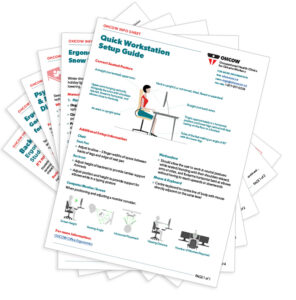 These MSD info sheets are downloadable pdfs, some with accompanying podcasts on the same topic. They also have live web versions, that are available here. By offering the information in a variety of different formats and presentations, users have multiple ways to take in the information.
These MSD info sheets are downloadable pdfs, some with accompanying podcasts on the same topic. They also have live web versions, that are available here. By offering the information in a variety of different formats and presentations, users have multiple ways to take in the information.
Back to School
Psychosocial Risk Factors & Musculoskeletal Disorders
Quick Workstation Setup Guide
Ergonomics of Fall Yard/Garden Chores
Ergonomics and Sleep
Ergonomics of Winter Chores
What Causes Our Symptoms
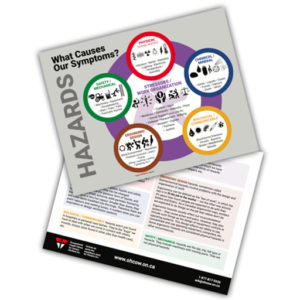 Hazards are the cause of job-related symptoms, injuries, diseases, illnesses and deaths. This poster organizes workplace hazards into coloured categories and highlights the hazard types with icons. This is the second step* in a process to identify hazards and brainstorm ways to prevent or reduce them. Health and safety inspections should cover each of these categories.
Hazards are the cause of job-related symptoms, injuries, diseases, illnesses and deaths. This poster organizes workplace hazards into coloured categories and highlights the hazard types with icons. This is the second step* in a process to identify hazards and brainstorm ways to prevent or reduce them. Health and safety inspections should cover each of these categories.
There are five health categories: chemical, physical (related to energy), biological, ergonomic design and work organisation/stressors. Only one is about safety. (That’s why it’s important to talk about safety and health.) The second page describes each hazard type.
Available in English, Spanish and Thai.
Health and Safety Prevention and Controls
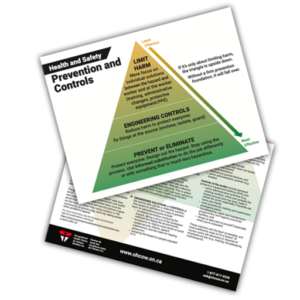 Prevention is the best way to deal with job-related hazards – by getting rid of them. This is the third step* in a process to identify hazards and brainstorm ways to prevent or reduce them. The front page of this poster makes clear that prevention protects everyone, while limiting the harm with controls relies more on individuals. Users can determine where the measures in their job fit now, and what would be more effective and really preventive. The back page describes the types of measures, from most effective to least effective.
Prevention is the best way to deal with job-related hazards – by getting rid of them. This is the third step* in a process to identify hazards and brainstorm ways to prevent or reduce them. The front page of this poster makes clear that prevention protects everyone, while limiting the harm with controls relies more on individuals. Users can determine where the measures in their job fit now, and what would be more effective and really preventive. The back page describes the types of measures, from most effective to least effective.
Available in English, Spanish and Thai.
Click on the image above to see a magnified version.
Where Does is Hurt? Body Maps
“Where does it hurt?” is a great way to start conversations about health and safety on the job, and to make visible the often-hidden harm of work. It’s the first step* in a process to identify hazards and brainstorm ways to prevent or reduce them. It also helps workers see they aren’t alone in suffering symptoms, illnesses, etc.
Using male and/or female outlines, people use coloured sticky dots/labels to indicate (in red) where they have aches and pains, (in green) where stress shows up in their body, and (in blue) where they have other symptoms (e.g., allergies, breathing problems, cuts). The questions are asked in English, Spanish and Thai.
Workers' Basic Health and Safety Wallet Cards
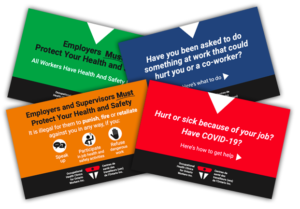 Available in English, Spanish and Thai, the following wallet-size reference cards contain helpful information for workers who need to exercise their rights for a healthy and safe work environment.
Available in English, Spanish and Thai, the following wallet-size reference cards contain helpful information for workers who need to exercise their rights for a healthy and safe work environment.
Working in the Cold
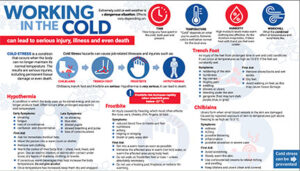 Tips on how to prevent hypothermia, frosbite and other extreme cold-related injuries. Double sided.
Tips on how to prevent hypothermia, frosbite and other extreme cold-related injuries. Double sided.
A Submission to the ACGIH TLV Committee
May 31, 2023 – A Submission to the American Conference of Governmental Industrial Hygienists
OHCOW’s mission includes a goal to protect workers and their communities from occupational diseases, injuries, and illnesses. As part of this mission, OHCOW encourages health-based and evidence-based occupational exposure limits (OELs) for chemical exposures.
In 2023, OHCOW had the opportunity to provide commentary to the ACGIH (American Conference of Governmental Industrial Hygienist) Threshold Limit Values (TLVs) and Biological Exposure Indices (BEIs). ACGIH TLVs and BEIs are not standards. They are health-based guidelines established by committees that review published and peer-reviewed literature.
Connections
The Events Calendar
An interactive events calendar has been added
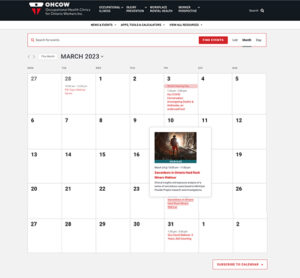
The New Homepage Design
A full redesign of the current site is underway, with the homepage and some sections being given a different look.
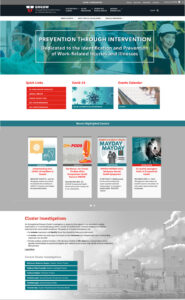
cont'd |
further scrolling: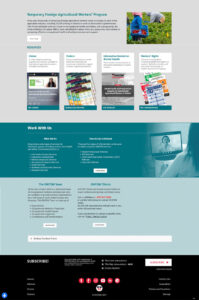 |
New Secondary Page Design
A new look and organization is being applied to the secondary pages of the website, and eventually to the entire site. After the Rubber Worker Cluster page was redesigned and reorganized, the OHCOW team in charge of the project received more phone calls and contacts.
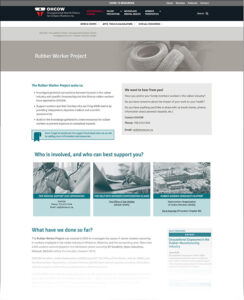
OHCOW Hygienist Wins Award
May 2023
OHCOW Occupational Hygienist John Oudyk was awarded the Hugh Nelson Award from the Occupational Hygiene Association of Ontario (OHAO). His colleagues at OHCOW, and those at partner organizations who also work with him, are pleased to see his professionalism, integrity, and humanitarian approach on behalf of workers recognized by his peers across Ontario.
The Hugh Nelson Award of Excellence in Occupational Hygiene may be presented annually to an individual who has worked or is working as an occupational hygiene professional in a full-time capacity.
John started in Chemical Engineering as a Co-op student, then at the shop floor/foundry level and eventually found his way to OHCOW. His mark as an occupational hygienist is something to be celebrated. He quickly became the teacher to many workers, unions and beyond at both college and university level, authoring /co-authoring several research papers, and translating the latest scientific research to his peers and Ontario Workers through his workplace interventions, presentations, and the development of hazard assessment tools and surveys to mobilize knowledge around workplace illness and injury prevention.
John’s colleagues at OHCOW proudly congratulate him on the honour.
Occupational Hygiene Association of Ontario – Hugh Nelson Award (ohao.org)
Official Apology given to Miners Exposed to McIntyre Powder
December 9, 2022
Former mine workers who were made ill from their exposure to McIntyre Powder have received an apology from Ontario Labour Minister Monte McNaughton. Thanks in large part to the spearheading of the McIntyre Powder Project by activist Janice Martell and her partnerships with OHCOW and others, the substance has been identified as having caused respiratory illness, lung disease and neurological conditions in workers. Martell was interviewed on CBC about the campaign and what the long-awaited apology means to her and injured miners.
From 1943 to 1979, miners in northern Ontario were forced to breathe in the black ground aluminum dust before they started their shifts.
McIntyre Powder is essentially ground aluminum dust, and it was administered to miners for over thirty years until 1979. The miners were told they had to take it or be fired. It was supposed to prevent lung disease, but in some cases actually ended up causing it, as well as other illnesses and irreversible neurological damage.
The Workplace Safety and Insurance Board of Ontario (WSIB) has recognized that miners forced to inhale McIntyre Powder were at a higher risk of developing Parkinson’s disease. Early in 2022, the province made the changes to allow families and miners who developed Parkinson’s tied to McIntyre Powder inhalation to file claims and be compensated for occupational disease.
As a long time supporter of Martell, the OHCOW web site has been reporting on the McIntyre Powder Project for a while… get more information.
OHCOW's social media platforms are used regularly to promote webinars and other events, to commemorate notable dates and occasions, and link to web content. Some posts, such as our acknowledgement of Doctor's Day and Nurse's Week, have included motion graphics.
Sample icons of the posts:
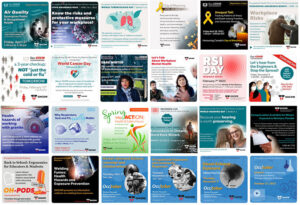
Partnerships
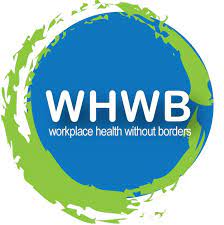 A Partnership to Spread Health and Science
A Partnership to Spread Health and Science
OHCOW Occupational Hygienist, Dr. Kevin Hedges CIH, ROH, is past president of Workplace Health Without Borders (International) and current board member. Workplace Health Without Borders International was founded in the spring of 2011 by a group of occupational hygienists in Toronto, Canada. Since then, WHWB has grown to include national branches in the United Kingdom, United States, and Australia. Each branch is an autonomous entity that operates consistently within WHWB’s strategic framework.
WHWB has published recent webinars related to accelerated silicosis affecting younger workers and their exposure to respirable crystalline silica (RCS) - from artificial / engineered stone countertops - a deadly and debilitating occupational disease.
Workplace Health Without Borders works to advance the protection of workers and promote best practices to improve worker safety and Health. To this end, in 2019 WHWB International signed a Memorandum of Collaboration with the United States National Institute for Occupational Safety and Health (NIOSH).
Like OHCOW, WHWB has delivered numerous international webinars that are COVID-19 related which can be seen on the WHWB YouTube channel. Recently WHWB hosted two international webinars that are silica related with a focus on engineered / artificial stone and the processing fabrication of this material for countertops. In both Australia and the US there has been a surge in cases of accelerated silicosis. The Australian data is showing that 1 in 4 operators have their respiratory health seriously impacted, with workers dying from silicosis at relatively young age in their 40s. Dr Bob Harrison from the US calls artificial / engineered stone “silicosis in a box” and WHWB believes that what is seen so far with numbers of workers with accelerated silicosis is the “tip of the iceberg”.
Webinars
Engineered Stone Countertops: How Big is the Problem? and WHWB Silica in Countertops Webinar, Parts A and B. Part B, Session B focuses on exposure controls.
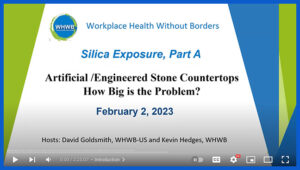 |
|
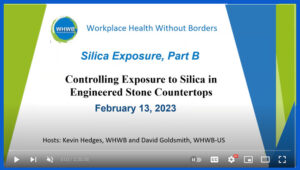 |
 Occupational hygienists from OHCOW regularly meet (on a volunteer capacity) with the Canadian Aerosol Transmission Coalition (CATC). This coalition allows for learning about and sharing the latest knowledge and guidance. This includes sources of information such as Indoor Air Quality Reports, provided by the Ontario Society of Professional Engineers (OPSE). Joey Fox P.Eng, a regular presenter in OHCOW webinar sessions, helped develop this good practice guidance. His website offers up-to-date information and useful graphics such as How Can You Clean The Air? W.A.T.C.H.
Occupational hygienists from OHCOW regularly meet (on a volunteer capacity) with the Canadian Aerosol Transmission Coalition (CATC). This coalition allows for learning about and sharing the latest knowledge and guidance. This includes sources of information such as Indoor Air Quality Reports, provided by the Ontario Society of Professional Engineers (OPSE). Joey Fox P.Eng, a regular presenter in OHCOW webinar sessions, helped develop this good practice guidance. His website offers up-to-date information and useful graphics such as How Can You Clean The Air? W.A.T.C.H.
Toronto Centre Queen's Park Representative Kristyn Wong-Tam used information provided by CATC and OHCOW to craft a recent members bill that promotes the Ontario Society of Professional Engineers core recommendations for safer indoor air to the Ontario government. The Bill is for an Advisory Committee to Protect Ontario’s People and Economy from Airborne Pandemics Act, 2023 which includes OHCOW as a stakeholder.
OHCOW knows the importance of messaging during a time of crisis such as the COVID-19 Pandemic, and have not stopped promoting best health and safety practices even as the official safety regulations are winding down.
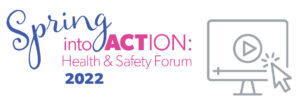
This free virtual event that ocurred on April 8, 2022, was a joint effort between the Ottawa & District Labour Council (ODLC), Health & Safety and Environment Committee and Education Committee and the Occupational Health Clinics for Ontario Workers (OHCOW) Local Advisory Committee.
The event was intended for anyone working in public health, including colleagues, committee members and all with an interest in Occupational Health and Safety.
This conference will benefit all workers.
SESSIONS / SPEAKERS
Session 1:
Presenter: Daryl Stephenson, Ergonomist, Occupational Health Clinics for Ontario Workers (OHCOW)
Title: Concussion, Post-Concussion Symptoms, Under-Reporting, and Prevention of Workplace Hazards
Session 2:
Presenter: Trevor Schell, Ergonomist, Occupational Health Clinics for Ontario Workers (OHCOW)
This webinar will Explain the anatomy of the shoulder, Examine common risk factors for injury, Explore the most common shoulder injuries including Thoracic Outlet Syndrome and Rotator Cuff Tears and Expand upon prevention measures
Title: The Four E’s Of Shoulder Injuries
Session 3:
Presenters:
James Brophy, PhD, Occupational Health Researcher
Margaret Keith, PhD, Occupational Health Researcher
Michael Hurley, President, Ontario Council of Hospital Unions (CUPE)
Title: Code White: Sounding the Alarm on Violence Against Health Care Workers and Violence in the Long-Term Healthcare Sector
Our Partners
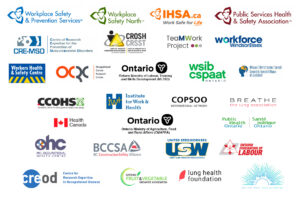
To learn more about these organizations, visit our Partners page.
